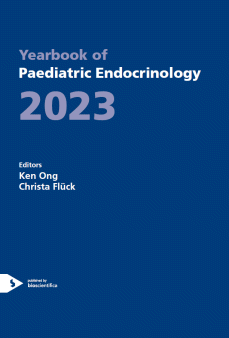2. Growth and Growth Factors
New Perspectives
ey0020.2-12 | New Perspectives | ESPEYB20
2.12. Pappalysins and stanniocalcins and their relationship with the peripheral IGF axis in newborns and during development
A Martin-Rivada , S Guerra-Cantera , A Campillo-Calatayud , EM Andres-Esteban , M Sanchez Holgado , GA Martos-Moreno , J Pozo , M Guemes , L Soriano-Guillen , A Pellicer , C Oxvig , J Frystyk , JA Chowen , V Barrios , J Argente
ey0020.2-13 | New Perspectives | ESPEYB20
2.13. Central growth hormone action regulates neuroglial and proinflammatory markers in the hypothalamus of male mice
F Wasinski , MR Tavares , DO Gusmao , EO List , JJ Kopchick , GA Alves , R Frazao , J Jr Donato
ey0020.2-14 | New Perspectives | ESPEYB20
2.14. Pathogenic copy number and sequence variants in children born SGA with short stature without imprinting disorders
K Hara-Isono , A Nakamura , T Fuke , T Inoue , S Kawashima , K Matsubara , S Sano , K Yamazawa , M Fukami , T Ogata , M Kagami
ey0020.2-15 | New Perspectives | ESPEYB20
2.15. Childhood height growth rate association with the risk of islet autoimmunity and development of type 1 diabetes
Z Li , R Veijola , E Koski , V Anand , F Martin , K Waugh , H Hyoty , C Winkler , MB Killian , M Lundgren , K Ng , M Maziarz , J Toppari




